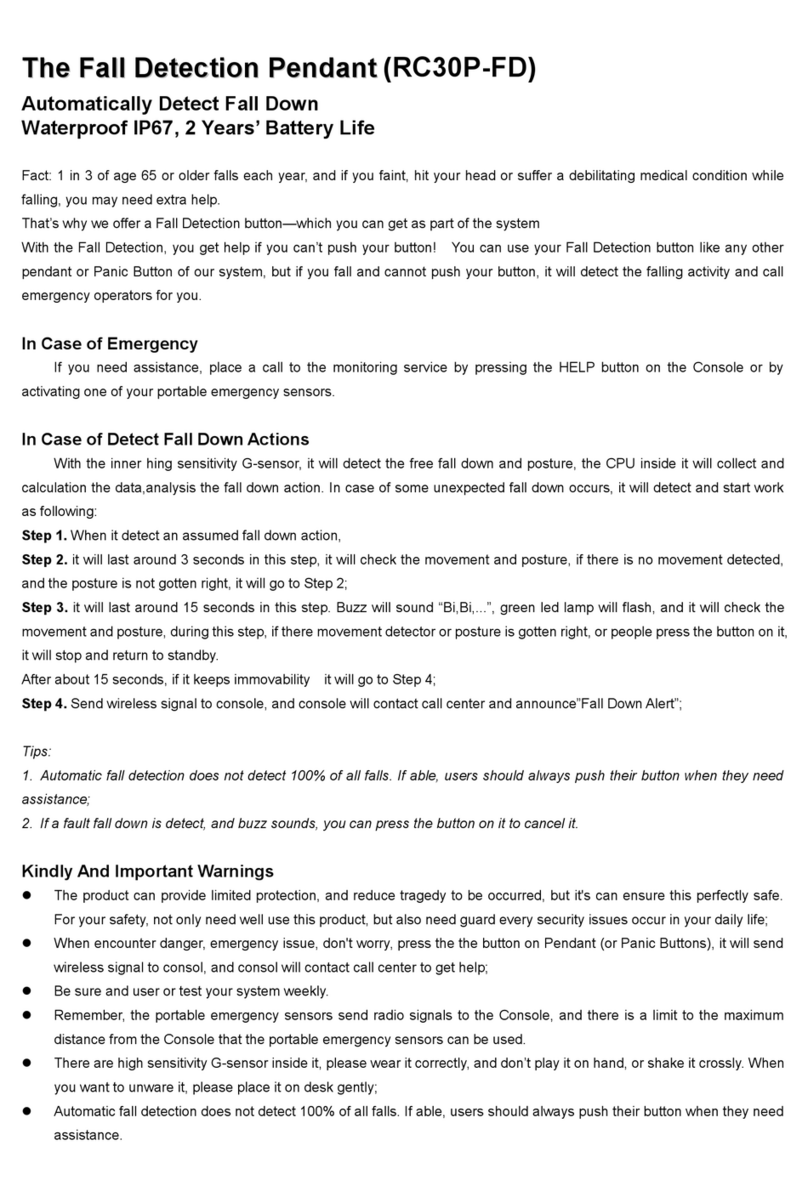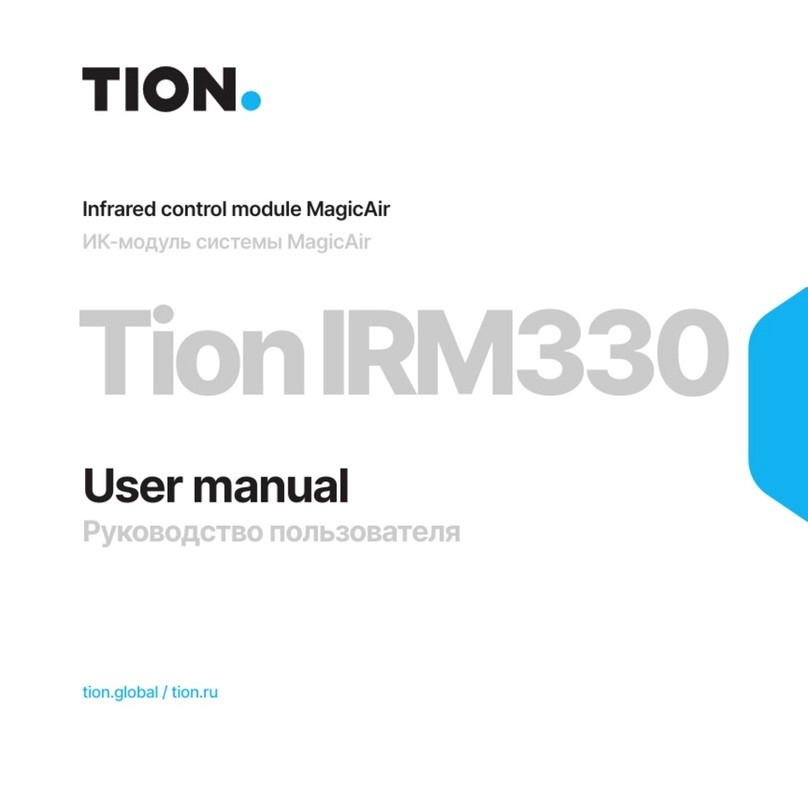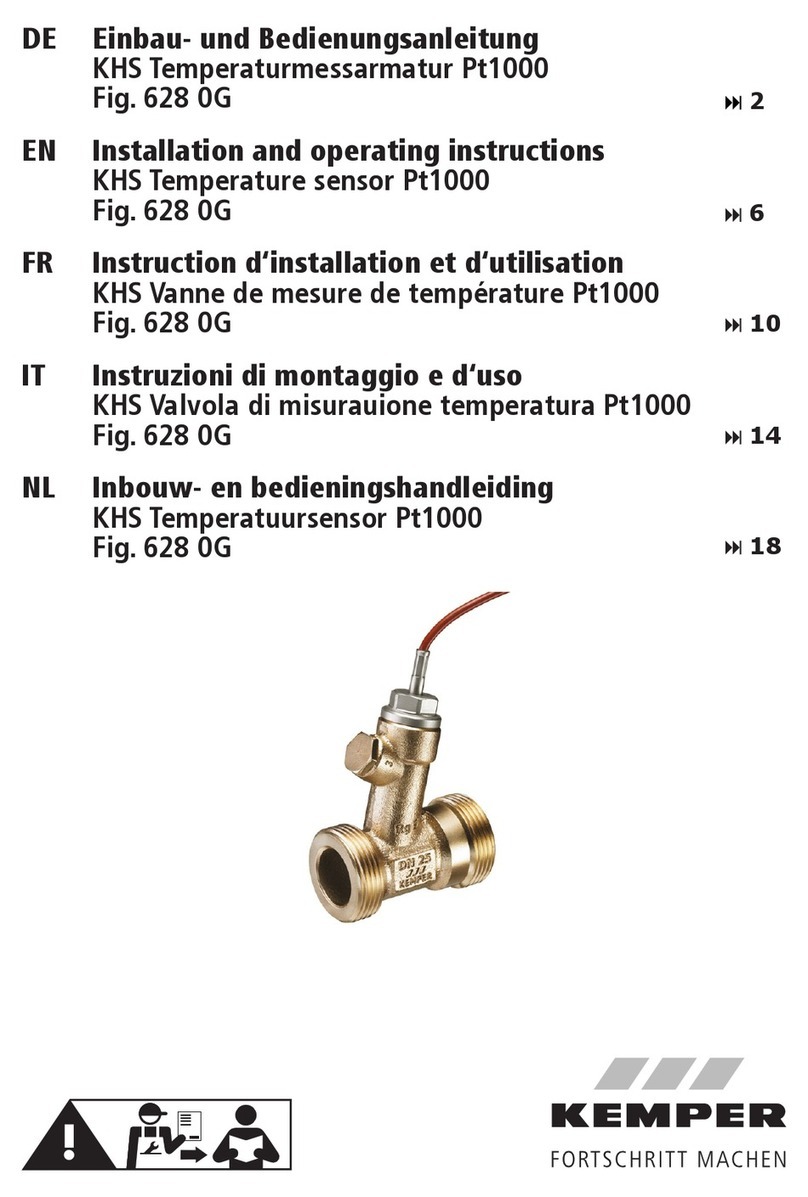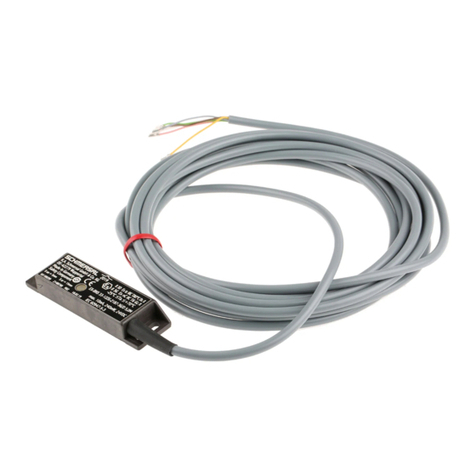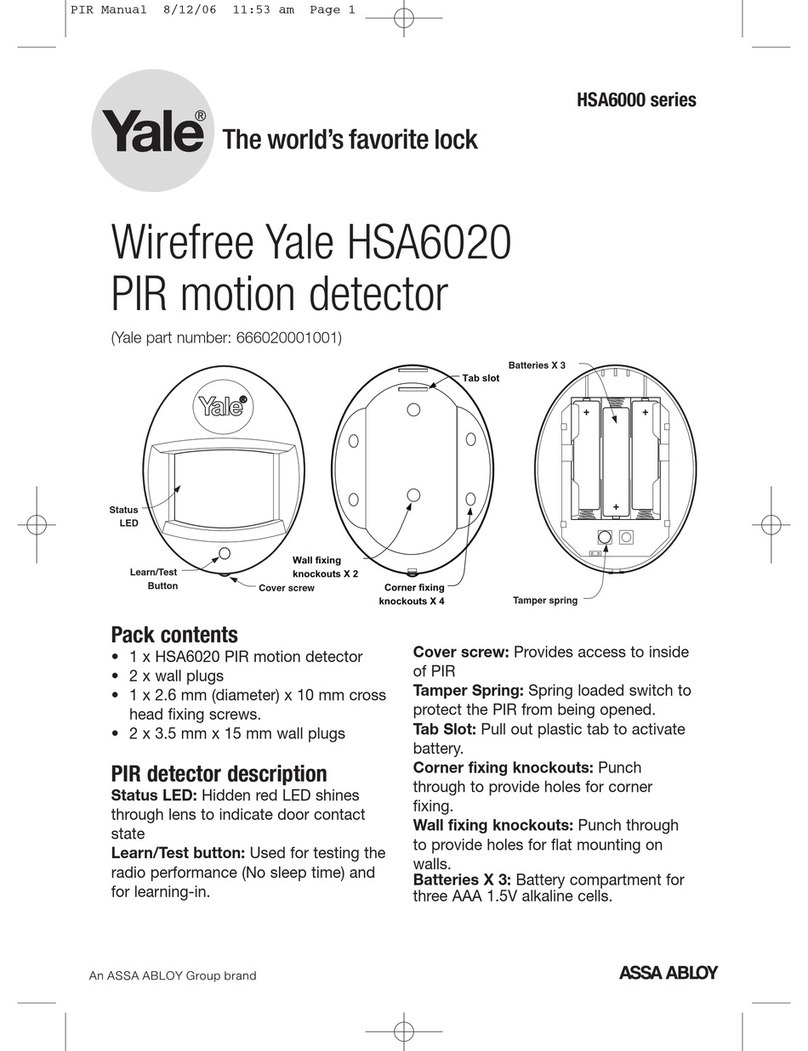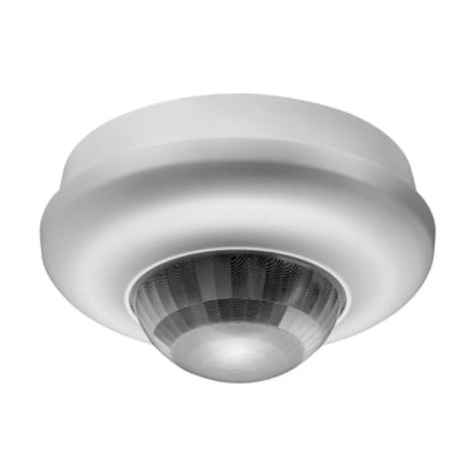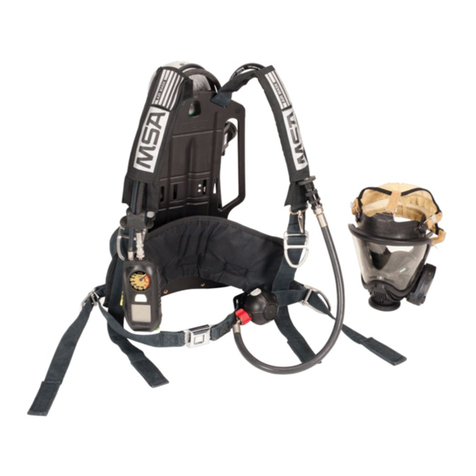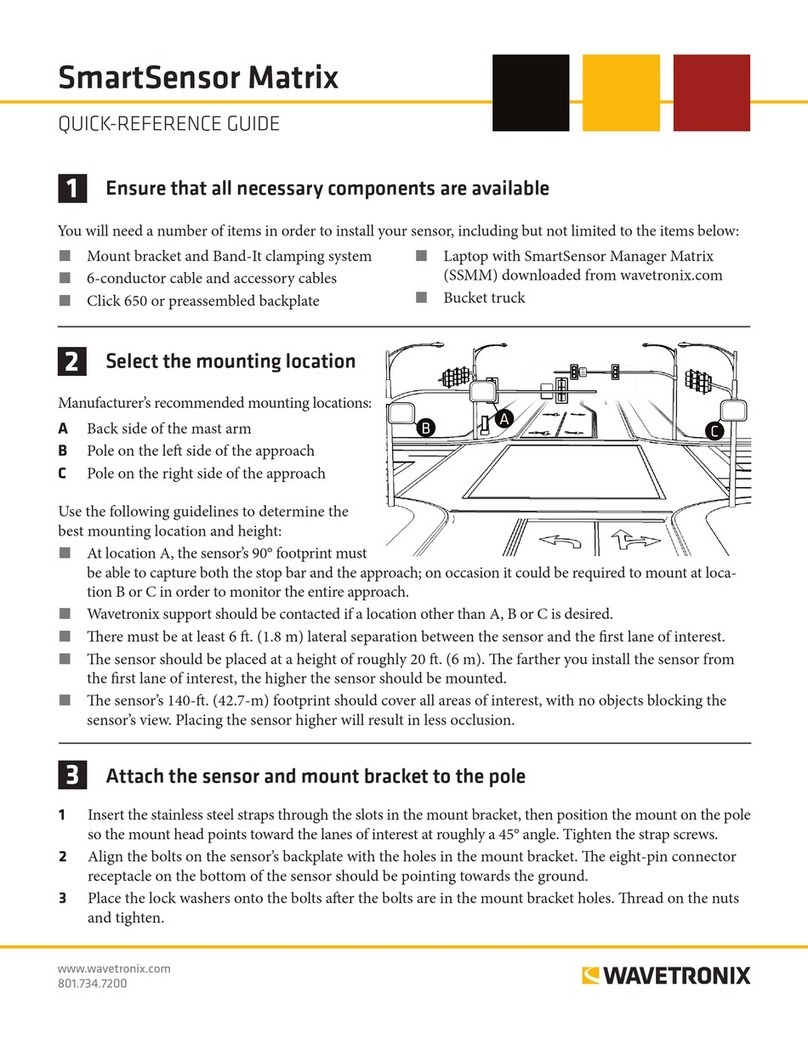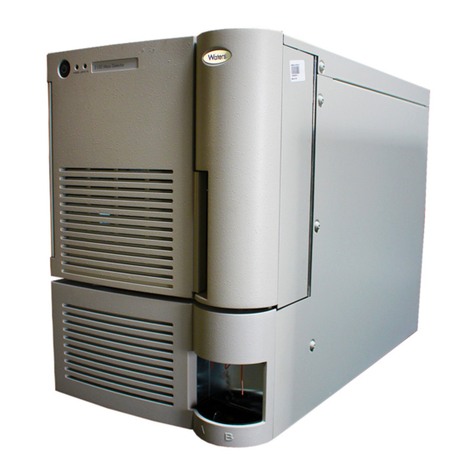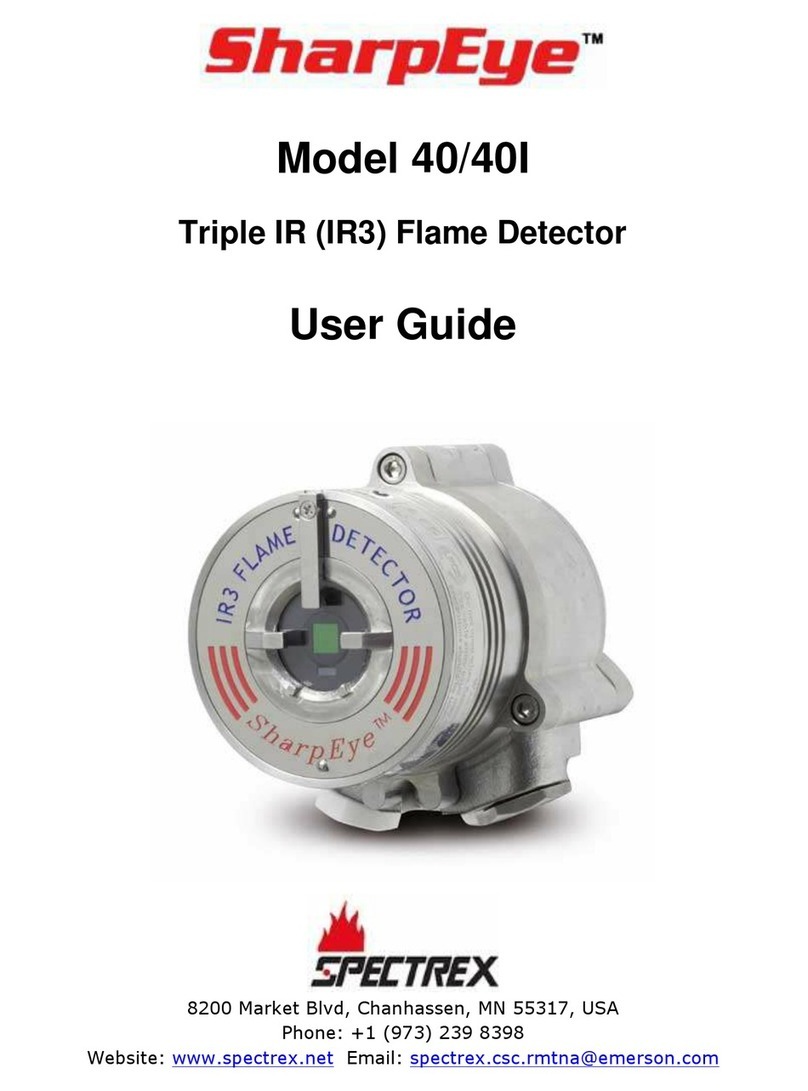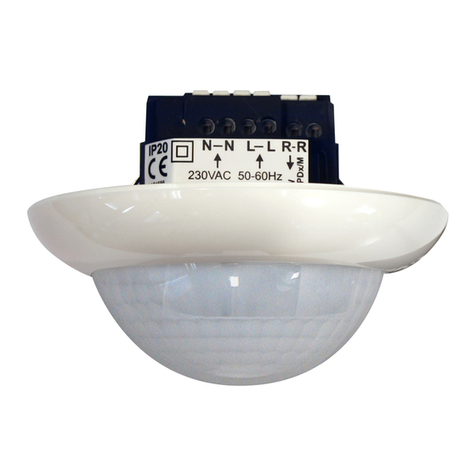Du Pont Tychem 6000 FR Cat.III ThermoPro TP275T User manual

Copyright©2018 DuPont. All rights reserved. The DuPont Oval Logo, DuPont™, Tychem® and all products denoted with ® or ™ are registered trademarks or trademarks of E. I. du Pont de
NemoursandCompanyor itsaliates.
Internet:www.ipp.dupont.com CE Ref.:Tychem® 6000FRThermoPromodelTP275T
DuPont de Nemours (Luxembourg) s.à r.l December2018/1/V1
L-2984 Luxembourg DuPontRef.: IFUTY60FRTP275T_011
EN • Instructions for Use
Tychem®
C
at.
III
protection
level
6000 FR
ThermoPro
model TP275T • orange
Date of manufacture
XXXX
2
DO NOT
RE-USE
Made in XXX
Other certification(s)independent of CE marking
TYPE PB
[3
-
B
]
EN 14605:2005
+
A1:2009
Protective Clothing
Category
III
EN 1149
-
5
:
2018
EN 14126:
2003
EN ISO 14116: 2015
Index 3
®
DuPont registered trademark
Ref.: XXX_XXX
Manufactured by
DuPont de Nemours
(Luxembourg) s.à r.l
L-2984 Luxembourg
0161
EN ISO
11612: 2015
A1 B1 C1
D1 E2 F2
6000 FR
ThermoPro
Orange
model TP275T
173
-
188 cm
107
-
117
cm
IEC 61482-2
APC = 1
1
2
3
7
4
5
2
6
8
10
1
6
9
15
11
12
13
14

IFU . 2
BODY MEASUREMENTS CM
Size Chest girth Body height
S78 - 87 150 - 170
M87 - 97 160 - 170
L97 - 107 165 - 175
XL 107 - 117 173 - 188
2XL 117 - 127 183 - 193
3XL 127 - 137 188 - 193
THE FIVE CARE PICTOGRAMS INDICATE
Do not wash. Laundering impacts upon protective performance (e. g. antistat will be washed o). • Nicht waschen.Waschen hat Auswirkungen auf die Schutzleistung (z.B. ist
der Schutz gegen statische Auadung nicht mehr gewährleistet). • Ne pas laver. Le nettoyage à l’eau altère les performances de protection (le traitement antistatique disparaît
au lavage, par ex.). • Non lavare. Il lavaggio danneggia le caratteristiche protettive (eliminando, ad esempio, il trattamento antistatico). • No lavar: el lavado afecta a la capacidad
de protección (p.ej. pérdida del revestimiento antiestático). • Não lavar. A lavagem produzirá impactos no desempe-nho da protecção (ex.: o efeito anti-estático desaparecerá).
• Não lavar. A lavagem produzirá impactos no desempe-nho da protecção (ex.: o efeito anti-estático desaparecerá). • Tåler ikke vask.Vask påvirker beskyttelsesegenskapene (f.
eks. vil den antistatiske beskyttelsen vaskes bort.). • Må ikke vaskes.Tøjvask påvirker de beskyttende egenskaber (f. eks. vil den antistatiske behandling blive vasket af). • Får ej
tvättas.Tvättning påverkar skyddsförmågan (antistatbehandlingen tvättas bort). • Ei saa pestä. Peseminen vaikuttaa suojaustehoon (mm. antistaattisuusaine poistuu pesussa).
• Nie prać. Pranie pogarsza właściwości ochronne (np. środek antystatyczny zostanie usunięty podczas prania). • Ne mossa. A mosás hatással van a ruha védőképességére (pl.
az antisztatikus réteg lemosódik). • Neprat. Praní má dopad na ochranné vlastnosti oděvu (např. smývání antistatické vrstvy). • .
( ). • Neprať. Pranie má vplyv na ochranné vlastnosti odevu (napr. zmývanie antistatickej vrstvy).• Ne prati. Pranje in
likanje negativno učinkujeta na varovalne lastnosti (npr. zaščita pred elektrostatičnim nabojem se spere). • Nu spălai. Spălarea afectează calităile de protecie (de ex. protecia
contra electricităii statice dispare). • . (, ). • Neskalbti. Skalbimas kenkia
apsaugai (pvz., nusiplauna antistatinė apsauga). • Nemazgāt. Mazgāšana var ietekmēt tērpa aizsargfunkcijas. (piem. var nomazgāt antistata pārklājumu). • Mitte pesta. Pesemine
mõjutab kaitseomadusi (nt antistaatik võidakse välja pesta). •Yıkamayın. Yıkama, koruma performansını etkiler (örneğin antistatik özellik kaybolur). • Μην πλένετε τη φόρα. Το
πλύσιο επηρεάζει την παρεχόενη προστασία (π.χ. η φόρα θα χάσει τι αντιστατικέ τη ιδιότητε).
Do not iron. • Nicht bügeln. • Ne pas repasser. • Non stirare. • No planchar. • Não passar a ferro. • Niet strijken. • Skal ikke strykes. • Må ikke stryges. • Får ej strykas. • Ei saa silittää.
• Nie prasować. • Ne vasalja. • Nežehlit. • . • Nežehliť. • Ne likati. • Nu călcai cu erul de călcat. • . • Nelyginti. • Negludināt. • Mitte triikida. • Ütülemeyin. •
Απαγορεύεται το σιδέρωα.
Do not machine dry. • Nicht imWäschetrockner trocknen. • Ne pas sécher en machine. • Non asciugare nell’asciugatrice. • No usar secadora. • Não colocar na máquina de secar. •
Niet machinaal drogen. • Må ikke tørkes i trommel. • Må ikke tørretumbles. • Får ej torktumlas. • Ei saa kuivattaa koneellisesti. • Nie suszyć w suszarce. • Ne szárítsa géppel. • Nesušit
v sušičce. • . • Nesušiť v sušičke. • Ne sušiti v stroju • Nu punei în maina de uscat rufe. • . • Nedžiovinti džiovyklėje. • Neveikt
automātisko žāvēšanu. • Ärge masinkuivatage. • Kurutma makinesinde kurutmayın. • Απαγορεύεται η χρήση στεγνωτηρίου.
Do not dry clean. • Nicht chemisch reinigen. • Ne pas nettoyer à sec. • Non lavare a secco. • No limpiar en seco. • Não limpar a seco. • Niet chemisch reinigen. • Må ikke renses. •
Må ikke kemisk renses. • Får ej kemtvättas. • Ei saa puhdistaa kemiallisesti. • Nie czyścić chemicznie. • Ne tisztítsa vegyileg. • Nečistit chemicky. •
. • Nečistiť chemicky. • Ne kemično čistiti. • Nu curăai chimic. • . • Nevalyti cheminiu būdu. • Neveikt īmisko tīrīšanu. • Ärge püüdke
puhastada. • Kuru temizleme yapmayın. • Απαγορεύεται το στεγνό καθάρισα.
Do not bleach. • Nicht bleichen. • Ne pas utiliser de javel.• Non candeggiare. • No usar lejía. • Não usar lixívia. • Niet bleken. • Må ikke blekes. • Må ikke bleges. • Får ej blekas. •
Ei saa valkaista. • Nie wybielać. • Ne fehérítse. • Nebělit. • . • Nepoužívať bielidlo. • Ne beliti. • Nu folosii înălbitori. • . • Nebalinti. • Nebalināt. •
Ärge valgendage. • Çamaır suyu kullanmayın. • Απαγορεύεται η χρήση λευκαντικού.
Body
height
Chest girth
ENGLISH
INSTRUCTIONS FOR USE
INSIDE LABEL MARKINGS
Trademark. Coverall manufacturer. Model identication -Tychem® 6000 FR ThermoPro model TP275T is a sleeved apron.This instruction for use provides information
on this garment. CE marking – The Partial Body (PB) apron complies with requirements for category III personal protective equipment according to European legislation, Regulation (EU) 2016/425.Type examination and
quality assurance certicateswereissuedbyAITEX, Plaza EmilioSala,1, 03801 Alcoy,Spain, identied by theECNotiedBody number 0161. Indicates compliance with European standards for chemical protective clothing.
Thisapronisinherentlyantistatic on the inside only and oerselectrostaticprotection accordingtoEN1149-5:2018combinedwithEN 1149-3:2004 when groundedproperly. Partial bodyprotection‘types’achieved
bythis apron dened bytheEuropeanstandardsforChemical ProtectiveClothing: EN 14605:2005+A1 2009 (Type PB[3]).Thisgarmentalso fullls the requirements ofEN14126:2003Type PB [3-B]. Protectionagainst
heatandameaccordingtoENISO11612:2015. Protectiveclothingagainstthethermalhazardsofan electricarcIEC 61482-2:2018. The fabricoers protection againstameaccordingtoENISO14116:2015Index3.
Wearer should read these instructions for use. Sizing pictogram indicates body measurements (cm) & correlation to letter code. Check your body measurements and select the correct size. Do not re-use.
Dateofmanufacture. Countryof origin. Other certication(s)informationindependentofthe CE-marking and theEuropeannotied body.
PERFORMANCE OF THIS GARMENT:
FABRIC PHYSICAL PROPERTIES
Test Test method Result ENClass*
Abrasionresistance EN530 Method2 >2000cycles 6/6**
Flexcrackingresistance EN ISO 7854 Method B >1000cycles 1/6**
Trapezoidaltearresistance ENISO9073-4 >100N 5/6
Tensile strength ENISO13934-1 >250N 4/6
Punctureresistance EN863 >10N 2/6
Chargedecay EN1149-3:2004Method2· EN 1149-5:2018 t 50 < 4s or S >0.2***, Pass N/A
N/A=Notapplicable *Accordingto EN 14325:2004 ** Pressure pot *** t 50 = decay half time, S = shielding factor
FABRIC RESISTANCETOPENETRATION BYLIQUIDS EN ISO 6530
Chemical Penetrationindex - EN Class* Repellencyindex-ENClass*
Sulfuricacid(30%) 3/3 3/3
Sodiumhydroxide(10%) 3/3 3/3
o-Xylene 3/3 3/3
Butan-1-ol 3/3 3/3
*Accordingto EN 14325:2004
FABRIC ANDTAPEDSEAMS RESISTANCETOPERMEATIONBY LIQUIDS EN ISO6529METHOD A BREAKTHROUGHTIMEAT1µg/cm2/min
Chemical Breakthroughtime (min) ENClass*
Toluene > 480 6/6
n-Hexane >480 6/6
Ethylether >480 6/6
Acetone >480 6/6
*Accordingto EN 14325:2004

IFU . 3
FABRIC RESISTANCETOPENETRATION OF INFECTIVE AGENTS
Test Test method ENClass*
Resistancetopenetrationbyblood andbody uids usingsynthetic blood ISO 16603 6/6
Resistancetopenetrationbyblood-borne pathogensusing Phi-X174
bacteriophage ISO16604ProcedureC 6/6
Resistancetocontaminationby contaminatedliquids ENISO22610 6/6
Resistancetopenetrationbybiologicallycontaminatedaerosols ISO/DIS 22611 3/3
Resistancetopenetrationbybiologicallycontaminateddust ISO 22612 3/3
*Accordingto EN 14126:2003
PROTECTIONAGAINSTHEATAND FLAME
Test Test method Result- EN Class*
Heatresistanceat a temp of 180°C +/-5°C ISO 17493 Pass
Heatresistanceat a temp.of260+/-5°C ISO17493 Pass
Limitedamespread(surfaceignition),CodeletterA1 ISO15025,ProcedureA A1,Index3**
Convectiveheat,codeletterB ISO9151 B1
Radiantheat,codeletterC ISO 6942,Method B C1
Moltenaluminiumsplash,codeletterD ISO9185 D1
Moltenironsplash,codeletterE ISO9185 E2
Contactheat,code letter F ISO 12127 F2
Electricarc-Openarctestmethod IEC61482-1-1 ATPV = 15 cal/cm2
Electricarc-Boxtestmethod IEC61482-1-2 4kA-APC=Class1
*Accordingto EN ISO 11612:2015 ** AccordingtoENISO14116:2015
SEAMPROPERTIESOFTYCHEM®THERMOPRO
Test method Testresult ENClass
Seamsstrength(ENISO13935-2) >300N 5/6*
*AccordingtoEN 14325:2004
Forfurther information aboutthisgarmentand its performances,pleasecontact your supplier orDuPont:www.ipp.dupont.com
RISKS AGAINST WHICH THE PRODUCT IS DESIGNED TO PROTECT:
This garment only provides partial body protection and is intended to protect the arms and the front part of the body
exposed to risk. It is designed to oer chemical protection and protection against heat and ame based on the specic uses in accordance with requirements of the standards and the classes for which the apron is certied.
The standards and classes are displayed in the CE-label in the apron. It must be used in combination with a heat and ame protective suit that covers the upper and lower torso, neck, arms and legs. It is designed to oer
limitedprotectionagainst shortame contact, small, certainformsof heat transfer,moltenmetalsplash, thermal risk fromelectricarcand as anescapegarmenttopotentially reduceskin burns or increasesurvivalprobability
in the event of a ash re if worn in combination with a heat and ame protective suit (conform to EN ISO 11612:2015). It is typically used, depending on toxicity and exposure conditions, for protection against certain organic
and inorganic liquids. Fabric used for this garment has passed all tests of EN 14126:2003. Under the exposure conditions, as dened in EN 14126:2003 and mentioned in the above table, the obtained results conclude that
the material oers a barrier against infective agents.
LIMITATIONS OF USE
:
This garment is not intended for re-ghting activities, and is designed to provide specic level of protection against certain chemicals, and if worn in combination with a heat and ame protective
suit also against short ame contact, molten metals, electrical arc or thermal radiation based on the standards and classes met by this garment as displayed in the above tables and on the CE-label in the garment.The garment does
not protect against all kind of electric arcs. Deviations from the parameters in this document may result in more severe conditions. This garment is not intended to be used as electrical insulating protective clothing and does not
provide protection against electrical shock. It is designed and tested to help reduce injury during escape from a re. It is intended to help reduce the potential for injury, but no protective apparel alone, can eliminate all risks of injury
or death. Protective apparel must be used in conjunction with general safety practices by trained personal. In the event of a molten metal splash the user shall leave the working area immediately and take o the garment. In the
eventofa molten metalsplash,the garment, if wornnextto the skin,willnot eliminate all risksofburn injury.No garmentssuchas shirts,pants,undergarmentsor underwearwhich melt underheat,ameand arc exposures shall be
worn underneath this garment.The use of Nomex® or non-melting undergarments is recommended. The air trapped between layers of material plays an important part in providing heat insulation.The protection is reduced in areas
whicharetighttting or compressed by belt or straps.Theaproncanonly provideprotectionif interfaces betweenthisapronwithother garments at the neck,wristsand ankles is adequate.Thefabricusedin this garment isinherently
antistatic on the inside surface only and this garment meets the surface requirements of EN 1149-5:2018 when measured according to EN 1149-3:2004. This shall be taken into consideration if the apron is grounded.The electrostatic
dissipativeperformance of both theapronandthe wearerneeds to be continuously achieved insucha wayas the resistance betweenthepersonwearingthe electrostatic dissipative protectiveclothing and theearth shall be lessthan
108 Ohm e.g. by wearing adequate footwear/ooring system, use of a grounding cable, or by any other suitable means. Always verify correct grounding via a test with a monitoring device. Electrostatic dissipative clothing shall not
be opened or removed whilst in presence of ammable or explosive atmospheres or while handling ammable or explosive substances. Electrostatic dissipative protective clothing is intended to be worn in Zones 1, 2, 20, 21 and 22
(see EN 60079-10-1 [7] and EN 60079-10-2 [8]) in which the minimum ignition energy of any explosive atmosphere is not less than 0.016mJ. Electrostatic dissipative clothing shall not be used in oxygen enriched atmospheres, or in
Zone 0 (see EN 60079-10-1 [7]) without prior approval of the safety engineer.The electrostatic dissipative performance of the electrostatic dissipative protective clothing can be aected by wear and tear and possible contamination.
Electrostatic dissipative protective clothing shall permanently cover all non-complying materials during normal use (including bending and movements). In situations where static dissipation level is a critical performance
property,endusers shouldevaluatethe performanceoftheirentireensembleaswornincluding outergarments,inner garments,footwear andother PPE.Furtherinformationongroundingcanbeprovidedby DuPont. According to the
current European standard (EN 14605:2005 + A1 2009; Type PB [3-B] for Chemical Protective Clothing Category III, this garment oers partial body protection and has not been tested according to the whole Jet test ( EN ISO 17491-3).
Exposure to certain very ne particles, intensive liquid sprays or splashes of hazardous substances may require garments of higher mechanical strength and/or barrier properties than those oered by this garment. The user must
ensure garment barrier compatibility to all chemical exposure risks before use. For enhanced protection in certain applications, whole suit chemical protective garments underneath with taping of cus, ankles and hood may be
considered.Taping of the garment may negatively impact protective properties against heat and ame, thermal radiation, electric arc and metal splash. If tape is used, the wearer shall use a ame resistant/high temperature tape.
Tape must not negatively impact dong process in case of an emergency.This fabric oers little or no thermal insulation to protect the wearer’s skin from prolonged exposure to hot or cold. The temperature range for the fabric and
seams it well beyond the temperatures that the human skin can withstand without injury.The user shall perform a risk analysis, including a verication of the barrier properties against the chemicals of concern, upon which he shall
basehis choice ofPPE.He shall be thesolejudge regarding the combination ofthepartial bodyprotectiveapronwithancillary equipment(boots,gloves, respiratoryprotectiveequipment,undergarmentsetc.)and for howlong athis
garment can be worn on a specic job with respect to its protective performance, wearing comfort and heat stress. DuPont shall not accept any responsibility for improper use of its products.
PREPARING FOR USE
: Inspect this garment prior to use. In the event of defects, contamination, or damage, do not wear.
CLEANING AND MAINTENANCE
: For limited use only. Donot clean,neither for hygienic reasons. This garment can beworn until damaged, altered orcontaminated. Ifthis garment is contaminatedduring use,
it must be decontaminated prior to dong and then discarded. If this garment is damaged during use, retreat immediately, undergo decontamination and then discard the apron.
STORAGE AND TRANSPORT
: This garment may be stored at < 49 °C in the dark (cardboard box) with no UV light exposure.The shelf life of this garment is 5 years if correctly stored.
DISPOSAL
:This garment can be incineratedorburied in a controlledlandll.Disposalrestrictionsdependupon the contaminationincurredduringuseandaresubject to nationalorlocal legislation.
DECLARATION OF CONFORMITY
:Declarationofconformitycan be downloaded at:www.safespec.dupont.co.uk.
Additionalinformation forother certication(s)independent of CEmarking.
Table of contents
